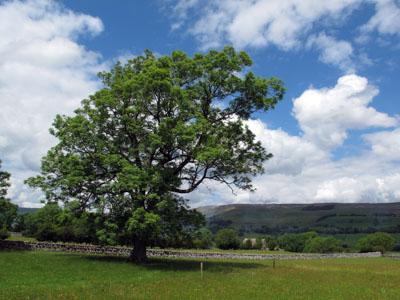 The implications for lichens of the spread of Chalara Dieback of Ash, a disease of ash trees caused by the fungus Chalara fraxinea, could be very serious. Ash is one of our most common trees, both in woodlands and as isolated trees in fields and hedgerows. The light dappled shade beneath its canopy is ideal for many of the lichens that grow on tree bark and wood. Like elm, the bark of ash has a relatively high pH, a requirement for many lichens. Several of the more ‘demanding’ species that were severely affected by loss of habitat following Dutch Elm Disease found refuge on ash. Now they are further threatened. The mixed ash woods of northern and western Britain are particularly rich lichen habitats, as are wayside trees everywhere, particularly veteran trees that may be many hundreds of years old.
The implications for lichens of the spread of Chalara Dieback of Ash, a disease of ash trees caused by the fungus Chalara fraxinea, could be very serious. Ash is one of our most common trees, both in woodlands and as isolated trees in fields and hedgerows. The light dappled shade beneath its canopy is ideal for many of the lichens that grow on tree bark and wood. Like elm, the bark of ash has a relatively high pH, a requirement for many lichens. Several of the more ‘demanding’ species that were severely affected by loss of habitat following Dutch Elm Disease found refuge on ash. Now they are further threatened. The mixed ash woods of northern and western Britain are particularly rich lichen habitats, as are wayside trees everywhere, particularly veteran trees that may be many hundreds of years old.
At least 536 species of lichen grow on ash trees, 27.5% of the British lichen flora, together with 31 lichenicolous fungi and 15 of the non-lichenized fungi that are recorded by lichenologists. Of these, 220 are nationally rare or scarce and 84 have a conservation status of critically endangered, endangered, vulnerable or near-threatened.
A very high proportion, 101, also have a status of International Responsibility, meaning that the British population is considered to be of international significance in a European or global context. 50 are priority species listed within the UK Biodiversity Action Plan, and 6 are given special protection under Schedule 8 of the Wildlife and Countryside Act (1981).
MORE INFORMATION on Ash Chalara dieback and lichens